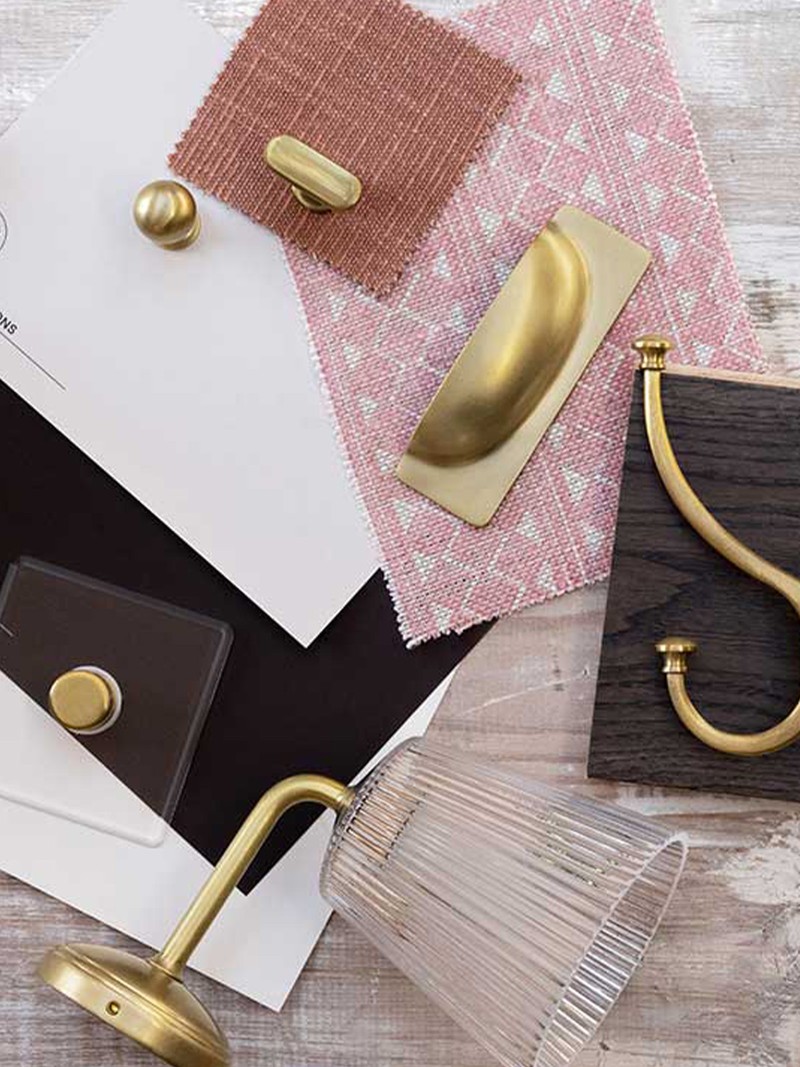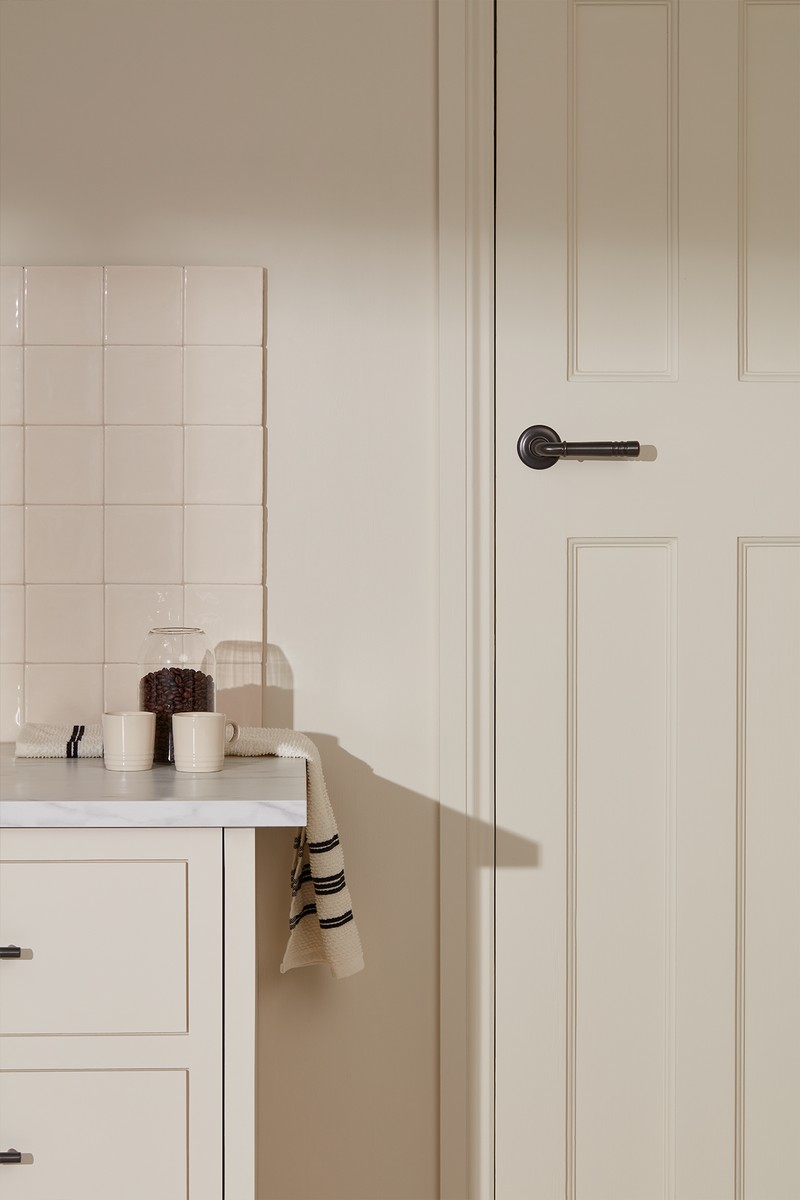Everything You Need To Know About Hardware
Let’s start with the basics – what do we really mean by ‘hardware’?
“Hardware is an essential part of both a functional and aesthetically pleasing home. From kitchen cabinets to bathroom vanity units and your front door, hardware is crucial for accessing rooms and units in your day-to-day-life. Whether it’s a pull, knob, lever or fitting such as hinge, choosing the right style and material will also have an impact on your interiors too, so it’s always worth considering how the hardware is being used, as well as the way it looks.” – Paul Clifford, managing director at Croft
What materials are hardware items usually made from?
“Bronze, antique brass, copper and polished nickel are very popular at the moment, as are unlacquered finishes and even powder coating to give you that matte black or glossy finish.” – David Gray, product director at Corston Architectural Detail
What should we think about when choosing a handle?
“Establishing an overall style preference is a good starting point. Handles tend to be categorised as classic or contemporary, with the former being more decorative than the latter.
Choosing between knobs or pull handles (as well as levers or T-bars for interior doors) comes next. Often, a combination can look more natural (and prove more practical) than going for just one shape.” – David
“Choose the size of handle which is most in proportion to the door. Just be aware that the current trend is for smaller knobs and handles, as the look is generally sleeker and more refined – bigger styles can look very dated. In a kitchen you might want a bigger handle depending on its purpose. For example, if it’s intended to pull open a heavy fridge or room door, consider the size with its function.” – interior designer Anna Hewitson
“There are several types of knobs, including knurled textures, heavyweight sizes and curved shapes. Pulls are a bit easier to grab onto, making them a great option for people with weak or arthritic hands. Your hands also have less contact with your cabinets, which helps to keep your surfaces clean, especially if they’re lighter in colour or from a material that’s more likely to stain. There are a number of pulls on the market, including: T-bar pulls, D-bar pulls, cup pulls, edge pulls, ring pulls and appliance pulls. T-bar and D-bar pulls are the most popular type on the market, working well on most styles of cabinet door — from Shaker-style to flat-fronted. They are typically characterised by having a long bar for a handle, which is attached by one or two points to cabinet fronts.” – Tom Revill, co-founder of Plank Hardware
And what about hinges – should they always match the handles?
“Not every part of your door’s hardware needs to match, but choosing hinges that work in harmony with your handles will result in a more cohesive and considered look.” – David
“It’s ideal but it isn’t always possible. Many companies offer lovely handles but with hinges you tend to have less choice. Changing hinges can be quite costly, too. If you’ve inherited handles and hinges and want to change just the handles, then it’s a good idea to paint the hinges into the door and frame.” – Anna
“The most meticulous homeowners will want their hinges to match their cabinet hardware. But it is worth remembering that hinges are barely visible day-to-day and, if they’re already in place, it’s not a necessary investment to replace them. Existing hinges could even be removed and spray painted with a complementary metallic spray.” – Tom
Is mixing metals a good idea?
“Matching architectural details has the power to harmonise a home. That’s why all our collections co-ordinate. That said, deliberately using a different finish – like on a standalone piece of furniture – is a great way to add a little interest and personality.” – David
“Mixing metals is totally acceptable and I encourage it. There’s something to be said about the eclecticism of mixing materials and metals – I think it adds more character to a space. You can get the best of both worlds in your kitchen by using a mixture of both knobs and pulls, in different materials. Perhaps you have one finish of hardware on your kitchen island, then another on your wall cabinets? Or a kitchen tap in matte black, and cabinet pulls in stainless steel? There are really no rules, provided you’re happy with your choices.” – Tom
“It’s fine to mix and match finishes – there are so many variations of bronze these days, for example, it can be hard to find an exact match anyway. But ideally, in a room, you’d keep the door handles and electrical plates (light switch covers) the same. Whatever you decide, just remember to choose your finishes carefully. Brass and chrome are classic, but a brushed finish will show fewer finger marks. A ‘living’ or unlacquered finish will also change its appearance over time, but a lacquered finish won’t.” – Anna
What mistakes do you see people make with their hardware?
“Proportions are really important, which is why our designers spend a lot of time making sure everything we create is to scale. Consider cupboard handles, for example: they shouldn’t be dwarfed by the size of the door, but nor should they overpower it.” – David
“One of the most common mistakes people make is overlooking functionality and focusing purely on aesthetics. Whilst it’s essential to choose hardware that complements the kitchen’s style, it’s important to consider how the hardware functions. For example, oversized handles might look great but can be uncomfortable to use if they clash with nearby cabinets when opening doors and drawers. Incorrectly measuring the spacing for cabinet handles and knobs can also result in uneven placement and an unbalanced look, so it’s important to measure carefully and mark placement before drilling holes.” – Tom
“Installing poorly made hardware could mean you spending more money in the long-term as cheaper designs can be felt immediately and often break or tarnish. Hardware is used throughout the day, so it’s best to choose a heavy-duty, well-made solution that will last for years to come.” – Paul
Inspired?
Here are nine hardware brands worth knowing about...
Corston
Established by a team of creative designers and engineers, Corston creates hand finished architectural details for any room. Collections are co-ordinated with solid brass switches and sockets, hardware and lighting. Trends take a back seat here – the focus is on building timeless pieces that work in any style of home, from a contemporary new build to a listed Georgian townhouse.
Visit Corston.com
Croft
With over 150 years of experience handcrafting architectural hardware since 1868, the extensive Croft collection is available in over 25 luxury finishes and patinas. Covering everything from interior and exteriors doors to windows, cabinets and even sliding door fittings, you can find Croft products at showrooms worldwide.
Visit Croft.co.uk
Rowen & Wren
Founded by a husband-and-wife team with a background in retail and design, this online emporium is a treasure trove of covetable pieces. From latches to pull rings and brass bathroom fittings, expect plenty of contemporary options with a minimalist finish.
Visit RowenAndWren.co.uk
Armac Martin
Armac Martin is a name to know for luxe brass cabinet hardware. All its pieces have been made at the same Birmingham factory since 1929 – and, unlike other brands, it offers colour samples, so you can try before you buy to ensure the perfect match.
Visit ArmacMartin.co.uk
Buster + Punch
A London-born business, Buster + Punch uses rare and exclusive materials to create industrial-looking but still elegant hardware. Long lasting and stylish, its hooks, handles and switches will work with multiple colour palettes.
Visit BusterAndPunch.com
Collier Webb
A third-generation British family business, Collier Webb works closely with some of the world’s top interior designers to produce made-to-order hardware and one-of-a-kind items.
Visit CollierWebb.com
Jim Lawrence
Offering handles, hinges, doorbells and letterboxes, Jim Lawrence is a one-stop shop for all your decorating needs. Its flagship store in Bath is well worth a visit if you’re in the area.
Visit Jim-Lawrence.co.uk
Plank Hardware
If you’re on the hunt for high-quality, modern designs without the designer price tag, Plank Hardware is the place to go. Its wardrobe handles, perfect for an instant refresh, are among some of its bestselling products, while the option to filter your online search by finish promises to streamline the process.
Visit PlankHardware.com
Mark Lewis
Proof that the small details do matter, interior designer Mark Lewis’s online store sells everything from stylish brass brackets ideal for kitchen shelving to chic bronze door hinges and cleat hooks for blind cords.
DISCLAIMER: We endeavour to always credit the correct original source of every image we use. If you think a credit may be incorrect, please contact us at info@sheerluxe.com.




